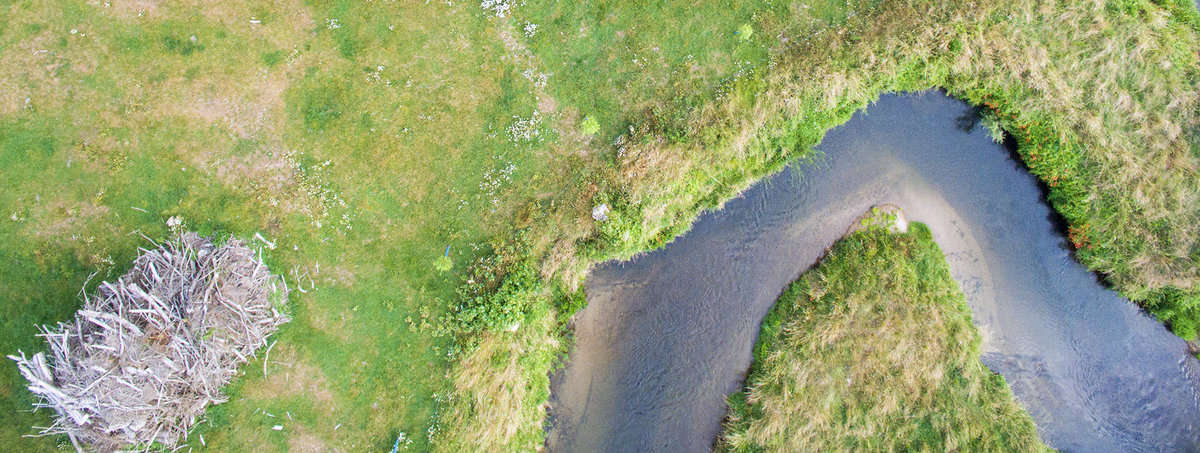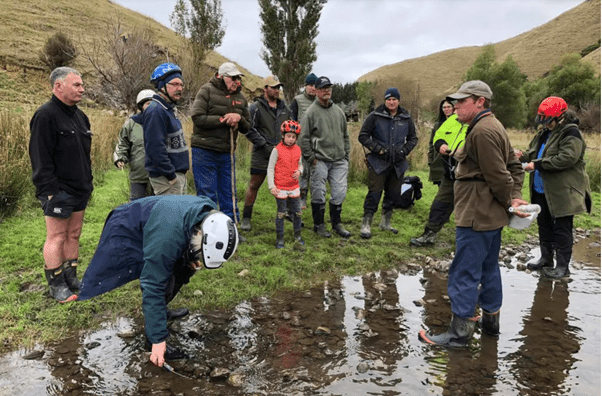Upper Waipoua River Story

Upper Waipoua River Story
Guardians of the Upper Waipoua River Catchment changing their backyard for the better.
There are hundreds of environmental groups through Aotearoa making big efforts to reduce the environmental footprint of farming within their catchment, and the ‘Upper Waipoua Kaitiaki Group’ in Wairarapa are an excellent example of the power of communities working together.
This group of farmers and community members, who live at the foot of the Tararua ranges, set out to gain a better understanding of their river, as they knew that having water flowing through open pasture wasn’t the best way to achieve better water quality. They formally came together in 2018, believing they could make a positive difference to their local waterways – in particular the Waipoua River. The group’s coordinator Gill Murray says today, the Upper Waipoua Kaitiaki Group is thriving and making great progress towards improving local water quality.
“To get to know our backyard better, we had several field trips where we traced the three waterways that flow into the Waipoua, from their sources,” Gill says.

Photo: Upper Waipoua Kaitiaki Group
“It was amazing to see their beginnings, as small trickles coming out around stones in the bush or high on someone’s farm. Following these helped us do a stocktake, as well as looking at the land. Even though we are neighbours, some of us hadn’t been on each other’s farms or focused on the streams.
“The vision of the Upper Waipoua Kaitiaki Group is to work together to enhance our environment, our community and our economic stability. As a group, we’ve always been keen to do things in ways that work for us as well as for the physical catchment.
“We achieve this by using our collective power to access to resources and funding, as well as sharing knowledge expertise and effort. We have a focus on the triple bottom line and want to be able to share our story and successes with others.”
While the group’s biggest challenge is finding enough time, they have achieved a remarkable amount. Field trips and subsequent regular group meetings (and friendly neighbourhood pressure) have increased their understanding of farming’s impact on the river. People have been motivated to fence off and plant areas, including previously grazed wetlands. Baseline water testing has now commenced to gauge improvement of water quality over time.
The focus now is on ‘filling the gaps’ in fencing and planting along their streams. Most local farmers are undertaking fencing and planting work with Regional Council support, one landowner has fenced off and planted 8km.
A partnership with Dung Beetle Innovations, has seen one farmer introduce dung beetles to his property. In addition to improving water quality by reducing the chances of E. coli and other harmful bacteria and substances entering the Upper Waipoua, the dung beetles helps to improve soil health, reduce parasites and pests, and aerates the soil.
A member of the Upper Waipoua Kaitiaki Group has close links with Rangitāne o Wairarapa and his knowledge has contributed to discussions and decisions made by the group. Rangitāne o Wairarapa are the tangata whenua of the rohe in which the Upper Waipoua Kaitiaki Group carry out their mahi and it was important to the group that this connection was present.
Many of the group are also involved in trapping pests, mainly stoats, possums and rats.
“We know that a lot of the stoats and ferrets heading toward Pukāha National Wildlife Centre come from our direction,” says Gill, “so it’s nice to know that our trapping efforts have a positive impact reducing the number of pests that end up downstream.”
“As farmers, we are working towards meeting regulations, but that motivation is really an aside to other outcomes we are seeking – we can swim in all the rivers , the return of vibrant steam life , pest free, all main streams fenced and planted, and most important a strong, prosperous, connected and resilient community.”